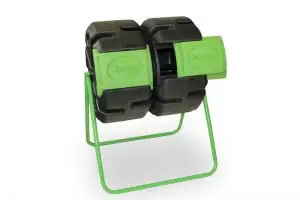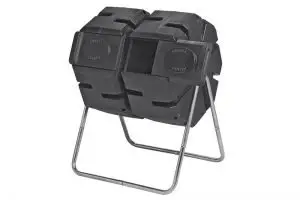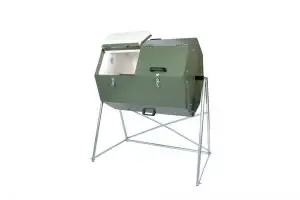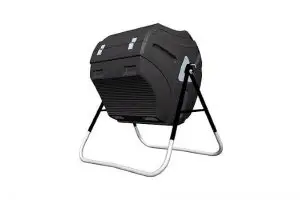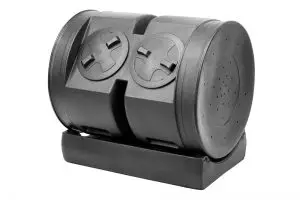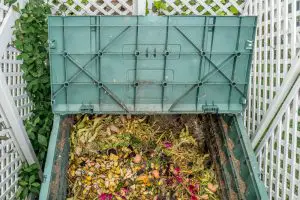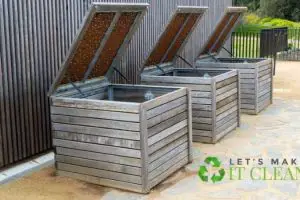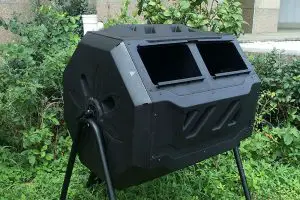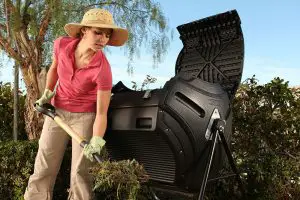Turning the compost pile is the most popular method of aerating it. However, there are still other methods that you can employ and keep the compost aerated. Here, we have the methods and how you can employ them.
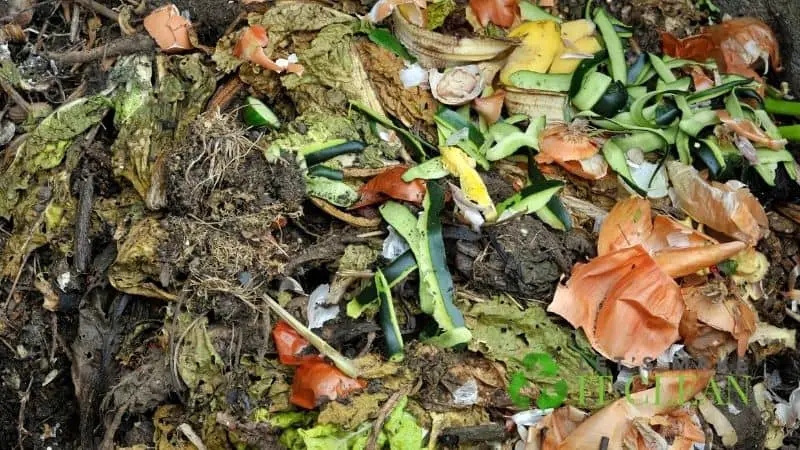
Hot composting requires aeration often because the aerobic bacteria in the compost piles use up the available oxygen quickly. Thus, there is a need to aerate the compost pile to make the composting process active.
Quick Navigation
What happens if there is no air in the compost heap?
Although the decomposing process will not grind to a complete halt, it will slow down significantly. The lack of air also results in a stinking compost heap.
Cool composts also require turning from time to time. This helps to eliminate all the anaerobic pockets that may be building up in the compost pile. You can see our reviews of the best compost aerators available on the market.
But is turning the pile the only way to aerate compost?
When and How Often to Aerate
Turning the pile achieves two essential objectives: aerating the compost and moving the material from the compost bin’s cool areas to the pile’s center where the temperatures are high. The high temperatures combined with the proper moisture content fastens the decomposition process.
There is no rule cast on the stone on when and how often you should aerate the compost. The aeration should depend on how wet the compost pile was and how fast it dries out. How fast it dries out could also depend on the location of your compost bin.
For instance, if you put the bin in direct sunlight or a windy location, it is bound to dry out fast. The best location would be in a humid location that exposes the pile to sunlight at certain times of the day to increase the temperature, and then there is shade.
For an active compost pile, you can aerate about three days a week.
Aeration can be fun. As such, children (teach kids to compost) and some enthusiastic composters can start turning the compost each day. While there is nothing explicitly wrong with this, it may not give the piles enough time to generate the necessary temperature essential for composting.
It also disrupts the formation of microbes that carry out the decomposing work.
A compost pile should be left to compost alone until it starts to turn cold. After that, you should turn it and leave it again to continue the decomposing process.
While turning compost remains the best aeration method, it is not the only method. If you don’t want to turn the pile, here are other tactics that you can employ:
Use a Different Composting System
Your choice of composting system can dictate whether turning compost is mandatory or not. In fact, some composting methods come in handy to help in compost turning.
For instance, a compost tumbler comes in handy in helping you turn the compost.
As such, if you want a no-turn compost, you should go for a compost system that doesn’t encourage turning.
For example, you can consider a multi-bin system where you empty one bin, and then the contents of another one are transferred into it. The transfer exposes the material, especially the one at the bottom of the bin, to oxygen.
Compost Balance
A healthy compost pile contains a balance of carbon to nitrogen ratio.
Nitrogen comes from green waste such as grass clippings, kitchen scraps, and other nitrogen-rich elements. Most of the green waste elements don’t have fiber, which makes them disintegrate fast and compact. The compaction contributes to the lack of oxygen for the organisms that help in composting.
Thus, if you have lots of green waste and food scraps in your compost pile, you may be forced to turn the compost to facilitate composting. Otherwise, you would end up with a stinking compost, and the lack of oxygen will also slow down the decomposition process.
On the other hand, you have carbon-rich ingredients such as wood chips, dry leaves, and straw. These elements contain fluffy material and fiber, which helps to offer pockets of air in the compost.
Thus, with a proper balance of green and brown materials, you will have pockets of oxygen maintained in the compost. As such, composting will continue even without turning. Remember to keep the compost damp to end up with the best results.
Airflow Tubes
Composting is at the highest at the center of the pile, where the temperatures are high. Thus, a lot of oxygen is needed, and it should also remain damp.
So, how do you ensure that the compost is well aerated at all times?
You can have airflow tubes that will draw air from the environment and deliver it to the pile’s center. You should have the tubes as you build your compost and add more materials into the pile.
The best thing is you don’t have to undergo any cost buying the airflow tubes. You can make do with leftovers of PVC (polyvinyl chloride). The airflow tube can be anything from 2 inches (5 centimeters) and above.
Additionally, you will need hardware cloth or a chicken wire. You should then drill holes on the entire length of the pipes. The holes should be about 6 inches (15 centimeters) separate from each other. This is a seamless and effortless process.
- Half inch hardware cloth, ideal for snake fence, chicken wire, opossum rehab cages,chicken coops run,rabbit fencing, flower beds, wide gutters guard, fruit trees, vegetable garden, to keep out small critters such as voles, gophors, racoons,etc
When you are through with drilling the holes, you should lay them in your compost area before adding the compost material.
Alternatively, you can have a roll of hardware cloth or chicken wire into a cylindrical shape.
The airflow tube should be long enough to reach the bottom of the compost pile and the pile’s top.
If you already have a compost pile and wish to add an airflow tube, it is still possible. You should first cut the pipe to the appropriate length and then drill the holes. To add the pipe to the compost bin, use sticks to dig a hole at the center.
It makes sense if you start with small sticks and graduate to bigger ones as the hole becomes bigger.
Apart from helping get oxygen to the bottom and center of the heap, the airflow is also instrumental when the compost runs dry. You can use the tubes to add water to the bottom of the pile to ensure composting goes on well without a hitch.
Layers
Another tactic you can employ to aerate your compost pile is having different layers of materials.
When you start building your pile, you should start with a layer of large, woody trimmings, cornstalks, and dead perennial stems. The materials allow a lot of air to get in from the bottom of the pile.
You can also distribute the materials through the pile as you build it up to ensure you maintain air pockets in the entire pile.
Note, if you plan on turning the compost, you should avoid this strategy. The large materials make it difficult to turn the compost as they get stuck in the fork or other compost aerators.
Finally, you can have a wooden shipping pallet as the foundation of your heap. You can combine the method with the large trimmings or use it alone.
The pallet is a few inches from the ground, allowing air circulation from the bottom of the pile.
Conclusion
Aeration is vital in composting. Turning remains the most-honored aeration method. However, it’s not mandatory that you must go through the strain.
You can look for other methods that will help to keep your compost aerated. Above, we have some of the most practical methods that you can use.

